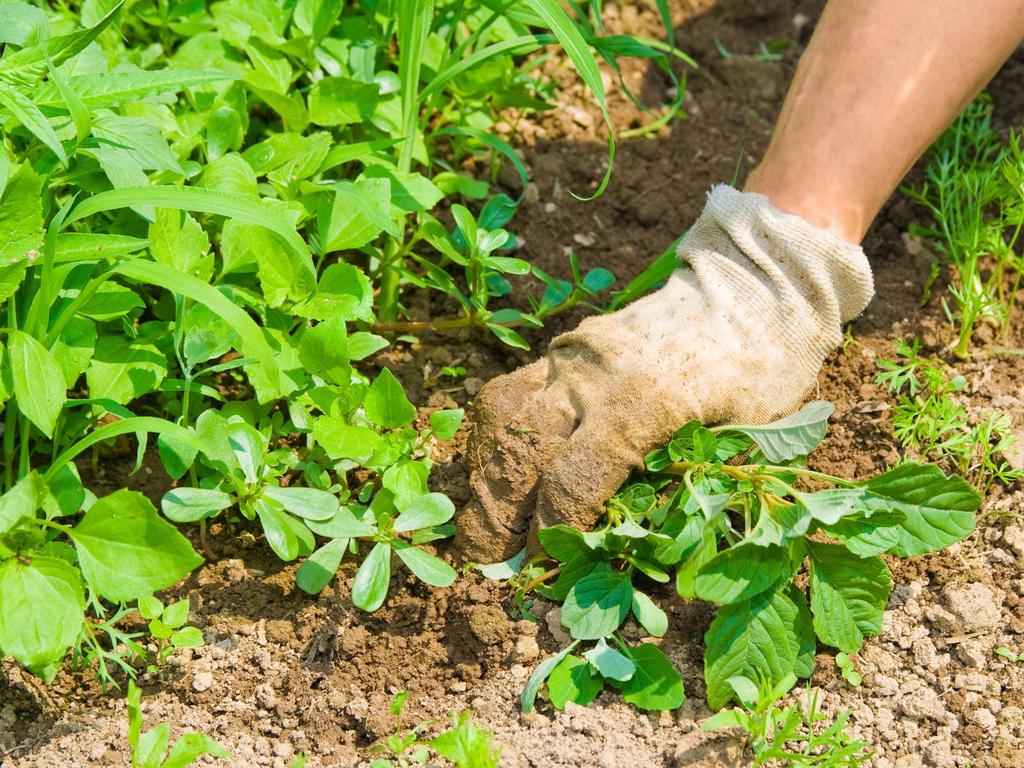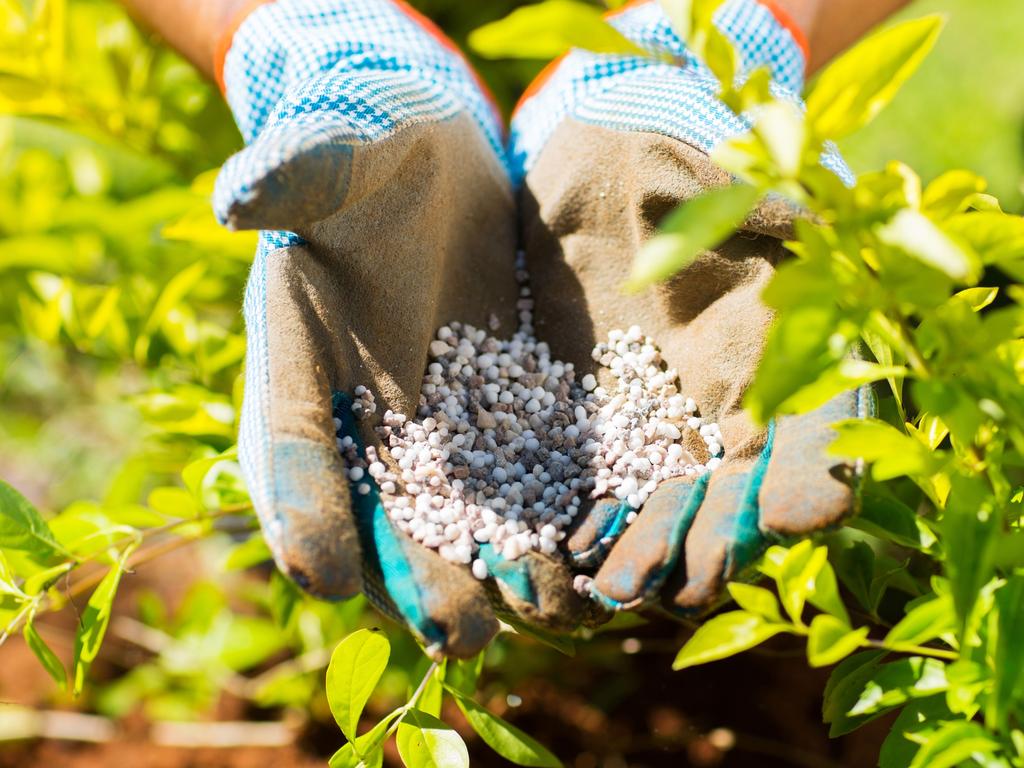Gardening tips for time-poor: how to quickly spruce up an overgrown garden
Not a green thumb? Here are four simple things you can do to keep your garden from running rampant while you get on with your life.

When yard demands have you harassed, here’s how to weed out that harried feeling
Not everyone is blessed with a green thumb or has a natural passion for all things green and garden orientated.
Perhaps you have moved from an inner-city apartment to a house in the suburbs and now have a front and back yard.
You’ve got a toddler on your hip, you’re sleep-deprived, at breaking point and you can all but hear the grass growing outside.

There just isn’t enough time in the day, let alone week, for that ever-growing to do list.
Is your garden suffering?
Fear not if this is you – I have four simple tips to follow.
These will give you a basic guide to see that your garden remains in tiptop shape and gives you and the kids a space to enjoy and savour.
The benefit of basics will surprise you.

WEEDS
Sadly, with these relentless things I don’t have a magic solution.
To get the best result I pull them out by hand. I use a pitch fork to loosen the ground, then sift through the soil and try and get them roots and all.
I suggest wearing gloves as this can be dirty work.
There are chemical solutions available, but please read the instructions and make sure you don’t use them around pets and children.
Use the appropriate PPE and clean up thoroughly after you have finished.
If you are environmentally conscious, there are numerous organic alternatives.
Ask at your local hardware store and they will point you in the right direction.
For the budget savvy, plain old boiling water will work; lemon juice and/or a mixture of one-part white vinegar and 10-parts water will work satisfactorily.
MORE: Sydney leading Australia’s home price recovery - PropTrack

MULCH (AND MULCH SOME MORE)
Make mulch your friend. It is one of the single best things for your garden. Choose a quality organic mulch and after weeding, place it on your garden beds but keep it away from the plant’s trunk.
This should be done at a depth of about 70mm.
Mulch keeps weeds at bay by preventing the sunlight from reaching the soil and germinating any seeds the weeds may have left.
Mulch also helps soil retain moisture, benefiting your plants during dry conditions.
Over time, mulch breaks down, adding much needed nutrients into the soil and providing food for your plants to absorb through their root system, helping them to thrive and grow.
During the colder months, mulch also acts as a blanket for your plants, keeping the root system protected during frosts and those chilly winter nights.
In my opinion, mulch is king.

PLANT POWER
Assess your garden and see what is thriving and what is not going so well.
It can be as simple as removing the plants that are not healthy and replacing them with a variety that could be better suited to that position.
Take into account the amount of sun, shade, water etc when choosing.
I suggest planting similar species together.
By this I mean plant masses of species that have similar water, light, food and maintenance requirements.
Generally, annuals will require more love and care, so perhaps look at natives as an alternative.

If replacing plants, choose bigger sizes, as they will keep your garden looking consistent if it is already established, and will also deliver more mature, stronger plants that will initially require a little less time to help get them established.
If you have pots, choose bigger pots that enable you to put more soil in, helping to retain moisture and food and giving your plants plenty of room to grow, meaning less maintenance and time spent keeping them looking their best.
Be warned, though: there is no such thing as a no maintenance garden.
Low maintenance can be achieved – but with your effort comes rewards.

LAWNS / IRRIGATION
Some people feel that mowing the lawn is a cathartic experience, but for many others it’s another mundane chore.
For me, I break it down into five key aspects. Snip, mow, blow, fertilise and water.
Snip
This can make the difference between a professional looking lawn or an amateur
one.
Before using a line trimmer, make sure you have the correct PPE on, especially eye protection.
Trim all grass up against hard surfaces and where your mower cannot reach. With practise you will become efficient and your lines will be straighter, making your lawn look good and preventing grass growing into the garden beds.

Mow
Lock into your brain equipment, height and frequency.
Sharp mower blades ensure a clean cut, preventing diseases.
If your blades are blunt, mowing will tear the grass, making it look shaggy.
Service your mower once a year as a minimum and you should be OK.
The height of cut is also critical to your schedule. Cutting your lawn too low to avoid extra work in the future only stresses your lawn, causing you more long-term grief.
I suggest mowing your lawn at a height of approximately 50mm. Once at a suitable height, I suggest mowing every two weeks as a minimum.
Try not to cut more than a third of the grass blade at any one time. You may need to cut more regularly during the growing season.
Footwear, hat and sunscreen is a must, especially in the Australian summer.

Fertilise
For your lawn to remain healthy it will need food. Apply a good quality, slow release fertiliser during the grass’s growing season.
Some fertilisers will require watering in, so read the instructions.
For a small investment you can buy a handheld spreader that will help give a more even coverage than the old school ‘feeding the chooks’ method by hand.
Loving your lawn doesn’t need to be a chore. Google your grass species and there will be plenty of advice to help you have a lush patch in no time.

Irrigation
Automated irrigation will eliminate the biggest time-consuming job in your garden: watering. Yes, there is an initial expense to install, but saving time, water and money – all while adding value to your home – surely is enough to make it a serious consideration?
You no longer need to worry about forgetting to turn the sprinkler off late at night and running through the mud and excess water because you have forgotten about it the next morning.
This is a set and forget system.
You can set dates, days and times to ensure each section of garden gets the amount of water it needs, when it needs it.

This investment seems like a luxury but trust me if you can, because it’s a must.
By following these basics, you will be OK.
Don’t consider the garden as an added pressure, consider it a sanctuary for you to escape to. There are numerous health benefits from being in the garden – including improved strength and fitness, not to mention stress reduction.
Your plants want to live, trust me. By providing them with the basics above, in most cases they will flower and fruit as they are designed to do.
Selling Houses Australia is available On Demand on FOXTEL.




